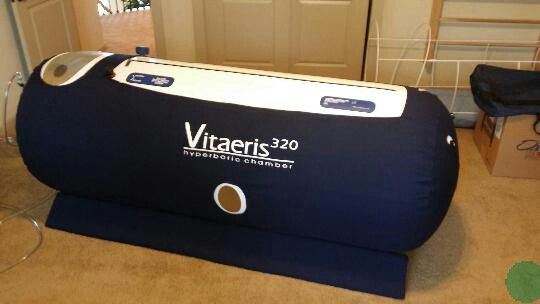Treating Wounds with Hyperbaric Oxygen Therapy

When it comes to treating wounds, there are plenty of techniques followed by medical professionals. While smaller injuries do not take a long time to heal, there are certain cases when the healing takes a lot of time.
Hyperbaric oxygen therapy, a non-invasive method, is gaining traction throughout the world for its excellent therapeutic approach to treating specific illnesses.
Hyperbaric therapy has been active for more than 50 years now, helping aid the patients. In addition to that, the chambers used for hyperbaric oxygen therapy are now certified medical devices. Even though Food and Drug Administration (FDA) has only approved a few conditions to treat with HBOT, researchers are discovering many new opportunities to treat other complex medical problems.
Treating wounds and injuries can take some time. Say, if a sportsperson is severely wounded while playing, the impact can be long-term, sometimes even hampering their career. Thanks to hyperbaric oxygen chambers that are now being used widely by singers, basketball players, Olympians to treat and recover faster.
How Can Hyperbaric Oxygen Therapy Aid in Treating Wounds?
If you are among those looking to understand how hyperbaric oxygen therapy treats wounds and complex injuries, it is crucial to learn how the therapy works. Read the article to find out the benefits.
Oxygen is one of the key components that help the human body speed up the healing process. Inside the hyperbaric oxygen chamber, the higher atmospheric pressure (ideally 2 to 2.4 ATM) allows the pure oxygen molecules to dissolve into the tissues and boost the healing capabilities to treat the damaged tissues of the wounded area.
According to the FDA statement, there are hyperbaric chambers to fall under the category of Class 2 medical devices. Moreover, it even mentions the injuries that can be treated faster using the therapy. These include:
-
Infected wounds that are taking a long time to heal.
-
Tissue damages from radiation.
-
Burns and diabetic ulcers.
-
Crush injuries.
-
Soft-tissue infections.
-
Healing flaps and compromised skin grafts.
Apart from the ones mentioned above, clinical research studies have also shown several positive effects of hyperbaric oxygen therapy on complex injuries and wounds.
What Procedure is Followed?
Hyperbaric oxygen therapy is not a very long process. Conventionally, a session of hyperbaric therapy lasts for around 2 hours, but it depends on the need of the patient and the severity of the wound.
There are only three phases that you will need to take care of to ensure that the outcome is beneficial. These phases are:
Pre-Therapy Phase: The Preparation
In the first phase, people need to consider the essential things. If you don’t own a personal hyperbaric chamber, you need to book an appointment with the specialist. Preparing before the therapy does not take much effort. Here are the things to consider before your HBOT session:
-
Ensure your doctor is aware of your medical history and your current condition.
-
Ensure you do not carry anything inflammable inside the chamber as it has pure oxygen.
-
Stay away from synthetic clothing, jewelry, and anything unnecessary. Instead, you can opt for non-static clothing.
-
If you have any medical device inside your body, such as Pacemaker, make sure your chamber is compatible and won’t cause any malfunctioning.
Second: During the Treatment
The second phase is where the main session starts. The procedure remains almost the same whether it is a personal chamber or a facility with a multiplace chamber.
Once you are prepared for the session, you will need to step inside the chamber. You will breathe pure oxygen, and your tissues will absorb it due to the higher atmospheric pressure. Furthermore, these oxygen molecules are absorbed by the body fluids.
This ensures that pure oxygen is supplied to the area of infection or wounds. Hence, resulting in boosting the internal healing process. Inside the sealed chamber, you will need to relax and let the chamber do its job.
Third: Post-Therapy Measures
After completion of the therapy, the specialist will gradually decrease the pressure. This will help in adjusting to the regular atmospheric pressure.
However, many patients can feel tired or lightheaded, as the human body needs time to adjust to the regular environment after the hyperbaric oxygen therapy. Thus, keep your attention and take care of the wounded area.
If you have multiple sessions, it is wise to record the number of sessions and their extent to measure the healing progress.
In Conclusion
There are varieties of hyperbaric chambers available, and all adhere to the basic principles mentioned above. It has helped millions of people, and there are multiple other benefits of hyperbaric oxygen therapy too.
With the help of pressurized oxygen, this non-invasive method of treating wounds is gaining popularity quite fast.
